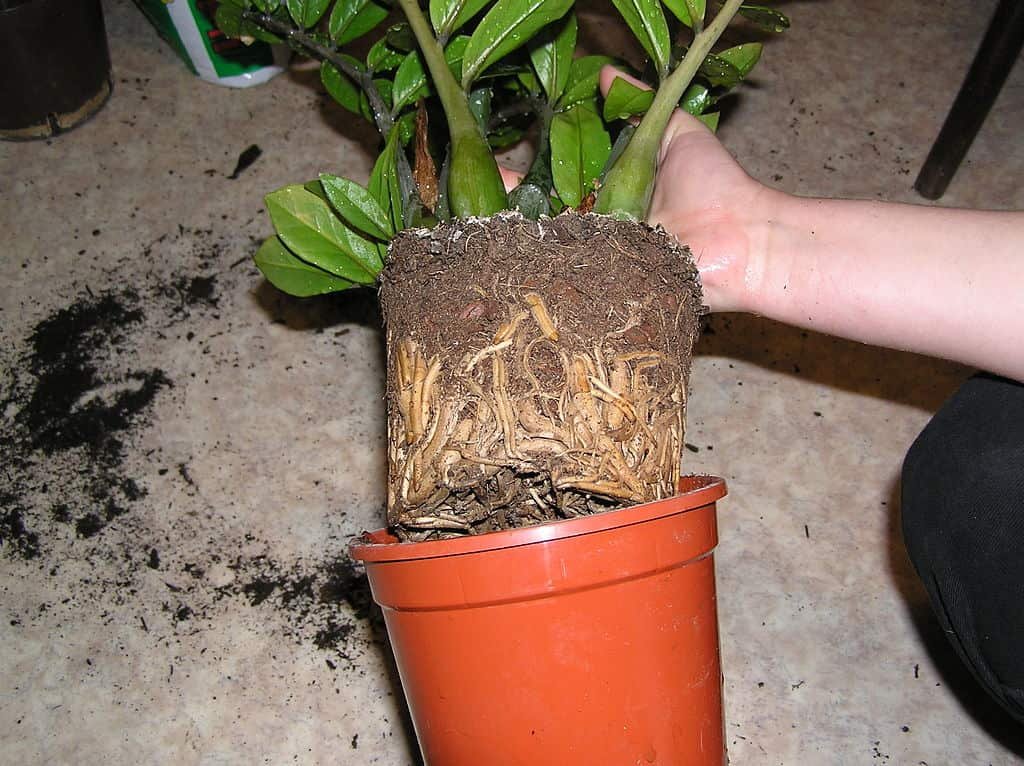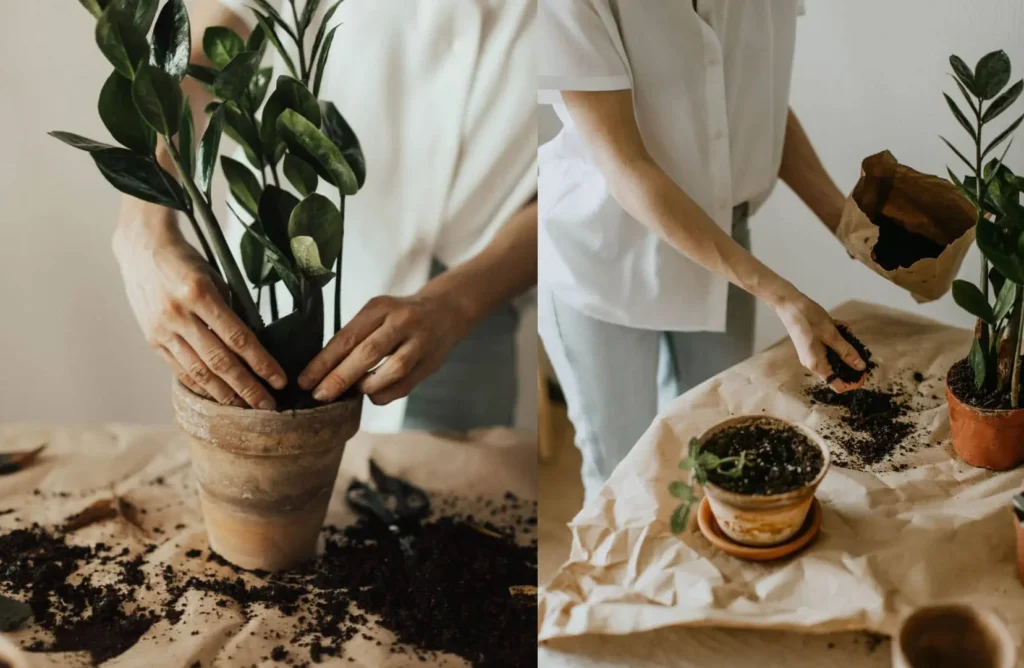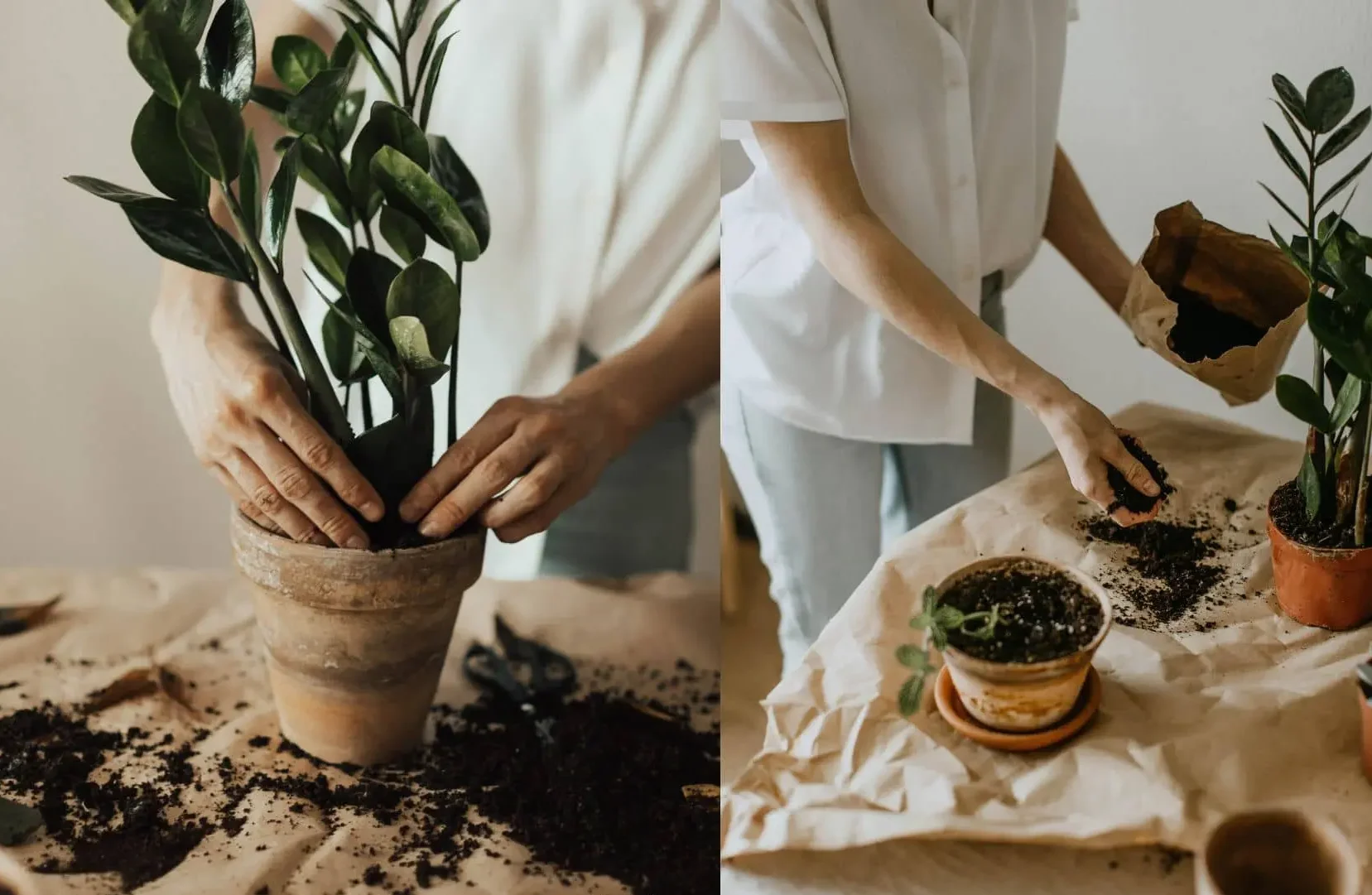Having a lush and vibrant home garden is an excellent way to bring nature into your home while providing you with calming greenery.
However, it can be hard to know how to properly care for your plants. One of the most important aspects of keeping a healthy garden is using the right soil mix.
Today, we’ll be looking at a special recipe for the perfect soil mix for ZZ plants – one of the most popular houseplants out there.
What Is A ZZ Plant?
ZZ plants (or Zamioculcas zamifolia) are leafy, evergreen perennials from East Africa that are popular as houseplants.
They’re well known for their low-maintenance needs and tolerance for neglect. It’s a great choice if you’re new to gardening or have a busy schedule that doesn’t allow you much time for plant maintenance.
Why Use A Special Soil Mix For ZZ Plants?
It’s true that ZZ plants can put up with less-than-optimal conditions, but they still need proper nutrition and drainage in order to thrive.
The ideal soil mix will provide them with all the necessary nutrients while also allowing appropriate water drainage.
If you want your ZZ plant to look its best, this recipe will give it just what it needs!

ZZ Plant Soil Mix Recipe
To create a suitable soil mix for your ZZ plant (Zamioculcas zamiifolia), you’ll want to create a well-draining mixture that retains some moisture without becoming waterlogged.
Here’s a recipe for a ZZ plant soil mix:
Ingredients:
- Potting soil: Use a high-quality, well-draining potting soil as the base of your mix. You can purchase a pre-made potting mix from a garden center or make your own by combining equal parts of peat moss, perlite, and vermiculite.
- Succulent/cactus soil: Adding some succulent or cactus soil to the mix helps improve drainage and prevents the roots from sitting in water. You can find this type of soil mix at a garden center or make your own by combining regular potting soil with coarse sand or perlite.
- Perlite: Perlite is a lightweight, volcanic glass material that aids in drainage and aeration. It helps prevent the soil from compacting and allows air to reach the roots.
- Orchid bark: Orchid bark is another option that can be used to improve drainage and create air pockets in the soil. It adds texture to the mix and promotes root health.
- Charcoal (optional): Charcoal can be added to the soil mix to help absorb excess moisture and prevent root rot. It acts as a natural filter and helps keep the soil fresh.
Instructions:

- Start by preparing your ingredients. If you’re making your own potting soil, mix equal parts peat moss, perlite, and vermiculite. If you have purchased pre-made potting soil and succulent/cactus soil, have them ready.
- In a clean container or bucket, combine the potting soil and succulent/cactus soil in a ratio of approximately 2:1. This will create a well-draining mixture.
- Add perlite to the mix, using about 1/4 to 1/3 of the volume of the soil. This will help improve drainage and aeration.
- If desired, include a small amount of orchid bark in the mixture. Use about 1/4 to 1/3 of the volume of the soil.
- If you have charcoal available, you can add a small amount (around 1/4 cup) to the mix. This step is optional but can help absorb excess moisture and maintain soil freshness.
- Thoroughly mix all the ingredients together until they are well blended.
- Your ZZ plant soil mix is now ready to use. Fill your plant pot with the soil mix, leaving enough space for the plant’s roots.
- Carefully remove your ZZ plant from its current pot and place it in the new pot, ensuring the roots are spread out and covered with the soil mix.
- Gently press down the soil around the plant to secure it in place, but avoid compacting the soil too much.
- Water your ZZ plant thoroughly but avoid overwatering. Allow the soil to dry slightly between waterings to prevent root rot.
Remember to regularly assess the moisture level of the soil and adjust your watering routine accordingly. ZZ plants prefer to dry out between waterings, so it’s better to underwater than overwater them.
Read details about fertilizer for ZZ plant.
What makes the special soil mix for ZZ plants different from other types of soil mixes used to grow other houseplants?
The key difference with the special soil mix for ZZ plants is that it includes several key ingredients that provide additional nutrients and support good water drainage.
This helps to ensure that the plant gets all of the nutrients it needs to thrive, while also helping to prevent root rot and other issues caused by overly wet soil.
Overall, this makes it a great choice for those looking for a simple yet effective way to care for their ZZ plant.
Conclusion
If you’re looking for an easy and affordable way to create a healthy environment for your ZZ plants, give this recipe a try.
By mixing together some common household items, you can easily make a soil mix that will help your plants thrive.
And if you have any questions or need some help getting started, don’t hesitate to reach out to us. We’re always happy to offer advice and tips on how to care for your plants.
Thanks for reading, and we hope you enjoy growing your own ZZ plants!
Related FAQs:
What if I can’t find all the ingredients for the ZZ plant soil mix?
If you can’t find all the specific ingredients listed, don’t worry! You can still create a suitable soil mix for your ZZ plant using a high-quality potting soil mixed with perlite or coarse sand for improved drainage. The key is to ensure good drainage and aeration for the roots.
Can I use regular garden soil for my ZZ plant?
It’s not recommended to use regular garden soil for ZZ plants, as it tends to be too dense and may not provide adequate drainage. ZZ plants prefer a well-draining soil mix to prevent waterlogging and root rot.
How often should I repot my ZZ plant using this soil mix?
ZZ plants generally prefer to be slightly root-bound, so you won’t need to repot them very often. Repotting every 2-3 years or when the plant has outgrown its current pot is usually sufficient. When repotting, replace the old soil with fresh soil mix and a slightly larger pot if necessary.
Can I use this soil mix for other houseplants?
While this soil mix is specifically tailored for ZZ plants, it can also work well for other houseplants that prefer well-draining soil, such as succulents, cacti, and certain tropical plants. However, you may need to adjust the proportions of the ingredients based on the specific needs of each plant.
Is it necessary to sterilize the soil mix before using it for my ZZ plant?
While sterilizing the soil mix isn’t strictly necessary, it can help prevent the introduction of pests, diseases, and weed seeds into your plant’s environment. You can sterilize the soil by heating it in an oven at 180°F (82°C) for 30 minutes or by microwaving it in a microwave-safe container for 2-3 minutes.
Can I reuse the soil mix after repotting my ZZ plant?
Yes, you can reuse the soil mix after repotting your ZZ plant, but it’s a good idea to refresh it by adding some fresh potting soil and perlite to improve its texture and nutrient content. Remove any old roots or debris from the soil before reusing it to prevent the buildup of pathogens.
How do I know if my ZZ plant needs repotting?
Signs that your ZZ plant may need repotting include roots growing out of the drainage holes, the plant becoming top-heavy and tipping over, or the plant appearing crowded in its current pot. Additionally, if you notice that the soil dries out very quickly after watering, it may indicate that the roots have filled the pot and need more space.
Can I use this soil mix for ZZ plant propagation?
Yes, you can use this soil mix for propagating ZZ plants. When propagating by division or leaf cuttings, plant the new divisions or cuttings in a pot filled with the soil mix and follow the same care instructions as for mature ZZ plants.
How often should I fertilize my ZZ plant when using this soil mix?
ZZ plants are not heavy feeders and can go for long periods without fertilization. If you choose to fertilize, a diluted, balanced liquid fertilizer can be applied once a month during the growing season (spring and summer). Always follow the instructions on the fertilizer label to avoid overfertilization.
Can I use this soil mix for outdoor ZZ plant cultivation?
Yes, you can use this soil mix for outdoor ZZ plant cultivation, provided that the outdoor environment meets the plant’s requirements for light, temperature, and humidity. Ensure that the outdoor location provides adequate drainage to prevent waterlogging, especially during rainy periods.
Is it normal for the soil mix to settle over time?
Yes, it’s normal for the soil mix to settle over time, especially after watering or when the plant’s roots grow and displace the soil. You may need to top up the soil occasionally to maintain the proper level in the pot.
Can I amend the soil mix if I notice any issues with my ZZ plant’s health?
If you notice any issues with your ZZ plant’s health, such as yellowing leaves or wilting, you can amend the soil mix by adjusting the proportions of the ingredients or adding specific amendments to address the problem. For example, if the soil is too compacted, you can add more perlite or coarse sand to improve drainage. If the plant shows signs of nutrient deficiency, you can use a balanced fertilizer or add compost to enrich the soil.
Can I use this soil mix for hydroponic cultivation of ZZ plants?
No, this soil mix is specifically designed for traditional potted cultivation and may not be suitable for hydroponic systems. Hydroponic cultivation requires a different medium, such as perlite, vermiculite, or coconut coir, to support the plants’ roots and provide nutrients in a water-based solution.
What should I do if I accidentally overwater my ZZ plant with this soil mix?
If you accidentally overwater your ZZ plant, allow the soil to dry out partially before watering again. Ensure that the pot has proper drainage to prevent water from accumulating at the bottom. You can also gently remove the plant from the pot and inspect the roots for signs of rot. Trim any damaged roots and repot the plant in fresh soil if necessary.
Can I add additional amendments to the soil mix for specific needs of my ZZ plant?
Yes, you can add additional amendments to the soil mix to tailor it to the specific needs of your ZZ plant. For example, if your plant prefers slightly acidic soil, you can add pine bark or composted pine needles to lower the pH. Similarly, if your plant requires extra nutrients, you can incorporate organic fertilizers or compost into the mix.
How deep should I plant my ZZ plant in the soil mix?
When planting your ZZ plant in the soil mix, position it at the same depth as it was in its previous pot. Ensure that the top of the plant’s root ball is level with the surface of the soil mix. Gently pat down the soil around the plant to secure it in place without compacting it too much.
Is it necessary to sterilize the pot before using this soil mix for repotting?
It’s a good practice to sterilize the pot before repotting to prevent the introduction of pests, diseases, and weed seeds into the new soil mix. You can sterilize the pot by washing it with soapy water and then rinsing it thoroughly with a solution of one part bleach to nine parts water. Allow the pot to air dry before adding the soil mix.
Can I use this soil mix for ZZ plant outdoor landscaping?
While ZZ plants are primarily grown as houseplants, they can be used in outdoor landscaping in frost-free regions with mild climates. In outdoor settings, ensure that the soil provides good drainage and that the plants receive adequate sunlight. You can use this soil mix for outdoor planting, but ensure that it’s appropriate for your local climate and soil conditions.
What is a ZZ plant and why is it such a popular houseplant?
A ZZ plant is a leafy, evergreen perennial from East Africa that is well known for its low-maintenance needs and tolerance for neglect.
This makes it an ideal choice for those new to gardening or with busy schedules that don’t allow much time for plant maintenance.
Its popularity also stems from the fact that it thrives in a wide range of conditions, making it a great choice for almost any home garden.
What are some tips for choosing the right soil mix for my ZZ plant?
Some key considerations when choosing a soil mix for your ZZ plant include the ingredients used, how much the mix costs, and whether it is readily available in your area.
Other factors to consider include whether you want an organic or non-organic soil mix, whether you prefer compost or worm castings, and what other types of plants you might be growing alongside your ZZ plant.
Ultimately, the best choice will depend on your preferences and individual needs. However, the special soil mix for ZZ plants is a great option that is sure to help you achieve optimal results with your plant.

